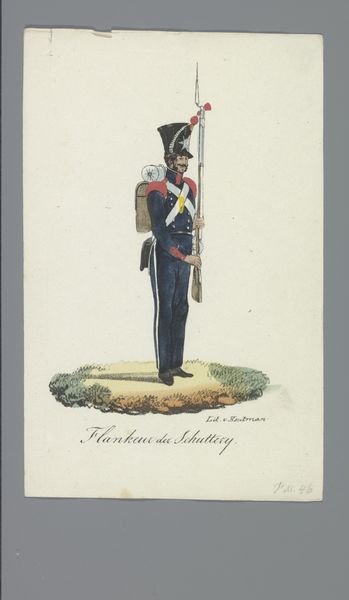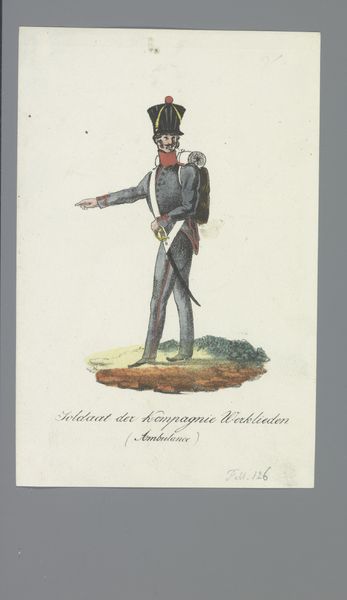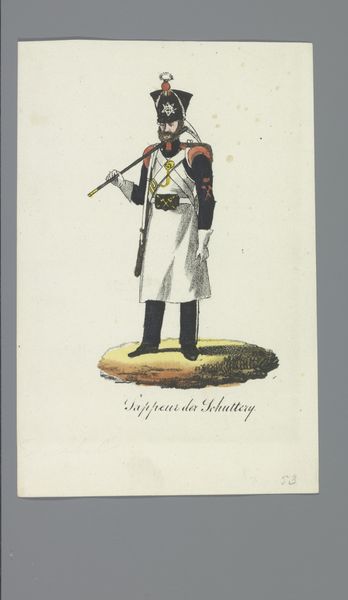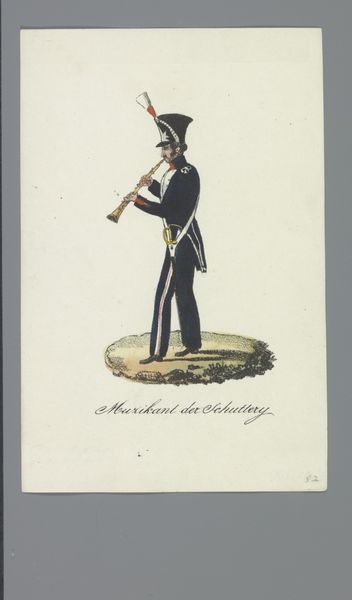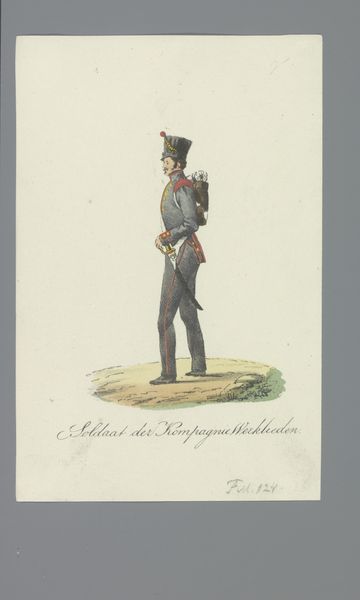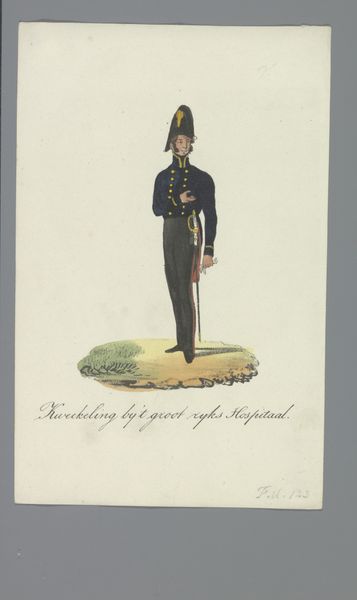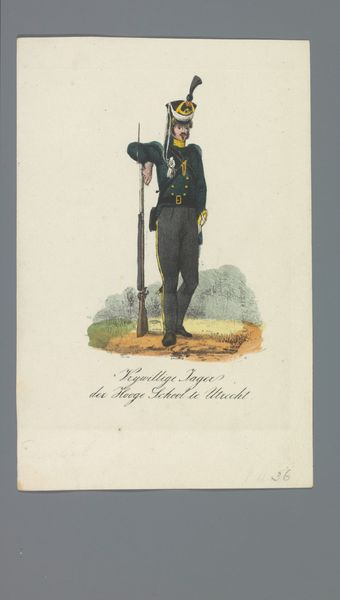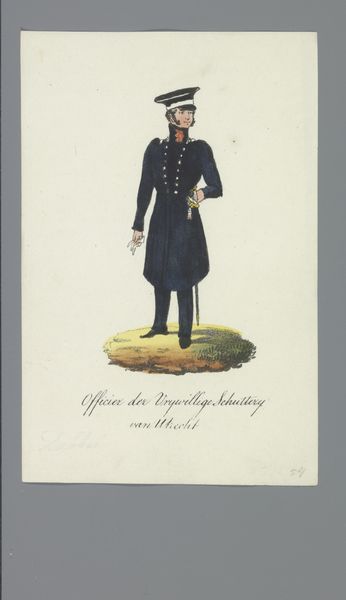
drawing, paper, ink
#
portrait
#
drawing
#
paper
#
ink
#
romanticism
#
genre-painting
#
academic-art
Dimensions: height 170 mm, width 110 mm
Copyright: Rijks Museum: Open Domain
Curator: This ink and paper drawing from sometime between 1835 and 1850, housed here at the Rijksmuseum, is titled "Schutter der Provinciale Schutterij in Marsch tenu", created by Albertus Verhoesen. Editor: My first impression is the overall delicacy. The color palette is so restrained, and yet there is a sense of quiet strength about this lone figure. Curator: The medium is indeed quite interesting. We see here a clear dedication to draftsmanship. Note how Verhoesen’s choice to create this piece as a drawing emphasizes the labor and the craft involved in documenting the schutterij. Consider the ink and paper he would have sourced, the tools for his drafting—the materiality is vital here. Editor: Absolutely. This image serves as an important document reflecting civic life during a period of nation-building in the Netherlands. It prompts me to question the societal role of these guards. What class did they represent, and what power structures were at play that they were meant to protect and enforce? Curator: You raise excellent points. It would be easy to see only the figure, but analyzing the process lets us glimpse these crucial historical components—who were they, really? What resources went into defining their identity in this way? Editor: Precisely! By positioning the militiaman against a minimal background, the artist forces us to really focus on his garb, which almost fetishizes these figures. This drawing not only documents his uniform, but it also idealizes it, shaping collective memory and perpetuating certain notions about civic duty. I do wonder if this wasn't intended for more of an elitist group of citizens. Curator: Well said! Examining the medium allows us to consider it on more egalitarian terms. I'm compelled to wonder about the economics of ink-making, the trade of paper—details of the processes behind creation, which, considered as commodities, help us analyze this drawing from all sides. Editor: Seeing this drawing, now I cannot help but think about labor, the power of visual propaganda, and even today’s world, and our society’s dependence on militarization. The ghost of those guards remains very present. Curator: Yes, indeed. When we give our careful attention to the whole, beginning with the sum of its parts, the impact and questions become almost impossible to ignore.
Comments
No comments
Be the first to comment and join the conversation on the ultimate creative platform.
